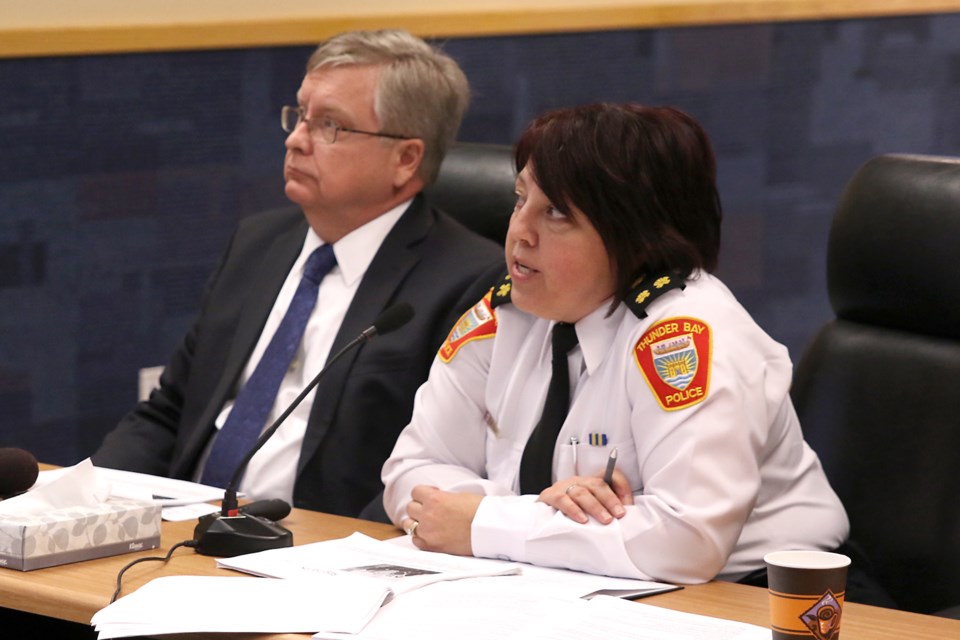THUNDER BAY – City police are turning to Saskatchewan to see if there are better ways to improve relations with Thunder Bay’s Aboriginal Populations.
Changes are already being put in place said Deputy Chief Sylvie Hauth, who last fall paid a visit to departments in Saskatoon, Regina and Prince Albert in search of ideas they could implement in Thunder Bay.
Hauth on Tuesday said last month Thunder Bay Police Service instituted a sudden death review committee, which will help ensure all cases are treated in the same manner, an issue that drew negative national attention to the department last year after a victim’s friend say police did not conduct a thorough enough investigation into the death of a man pulled from the McIntyre River.
“It’s really to look overall at how we do business,” Hauth said. “At the end of the day, sudden death includes everything that we deal with, whether it’s a homicide, a natural cause or an accident, where someone has passed away.”
Each case will be reviewed internally, but by someone not involved in the case, to ensure proper procedures were followed.
“It’s to make sure that every aspect of the investigation has been covered off.”
For example, the review will ensure the coroner was contacted, that crime scene unit investigators were on scene and that next-of-kin have been notified.
“Just basic information that goes step-by-step to ensure that we dealt with the situation from A to Z in an appropriate and legislated (manner),” Hauth said.
At the end of the day, if anything has been missed it’s a matter of pointing investigators in the right direction and making sure they go back and thoroughly complete the job.
Other initiatives are being considered, but will take longer to implement and are dependent on the availability of resources to make them happen and cover the cost.
Hauth said they chose Saskatchewan communities because all three faced similar problems to the ones found in Thunder Bay.
All have high Aboriginal populations and all three faced obstacles and criticism in the past. Saskatoon police in the past were accused of so-called Starlight tours, which saw them drop First Nation people outside city limits.
“They went through a tough mess when it came to their relationship with the Aboriginal community,” Hauth said.
“But they were able to reach out … to build a relationship.”
In Saskatoon, senior officers attend community events to bridge the gap. The force also employs a pair of elders to forge a connection between police and First Nations people.
“They are very prominent within the organization and help with their training program,” Hauth said.
Officers in all three cities spend more time bridging the cultural divide and all three departments have reached out to Aboriginals through recruiting and youth programs.
Prince Albert, a town of 35,000 and a police budget about half that of Thunder Bay's, has a third of its force of Aboriginal descent, attracting people who might initially be written off, those with good character and personality.
“They’re set up to succeed,” Hauth said.
